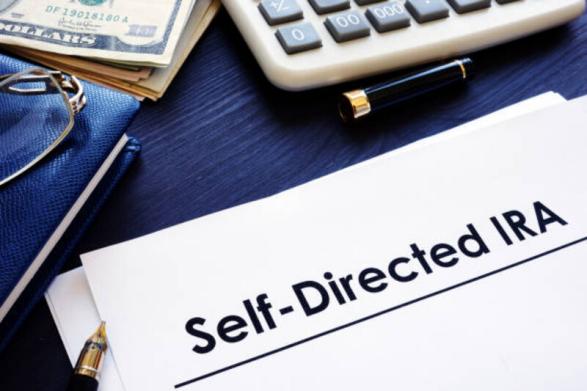Decoding the Mystery: A Comprehensive Guide to Self Directed IRAs
Dec 20, 2023 By Triston Martin
Self-Directed Individual Retirement Accounts (SDIRAs) offer a unique avenue for individuals aiming to diversify their retirement portfolios. While traditional IRAs offer standard investment options such as stocks, bonds, and mutual funds, SDIRAs open the door to a wider array of investment choices including real estate, private placements, and even precious metals. This guide seeks to demystify SDIRAs, providing an in-depth understanding of their structure, benefits, and potential risks. We aim to empower you with the knowledge needed to navigate these less-explored waters of retirement planning, potentially leading to more robust financial stability in your golden years.
Understanding a Self Directed IRA

A Self-Directed IRA is a type of Individual Retirement Account that allows the account holder to invest in a wide range of alternative assets. Unlike traditional IRAs, which are typically managed by financial institutions, SDIRAs allow individuals to take charge of their retirement investments and make decisions on where their money is placed. This means investors have more control over their retirement funds, providing the potential to diversify their portfolios and potentially earn higher returns.
How Self Directed IRAs work?
Self Directed IRAs work similarly to traditional IRAs in terms of eligibility and contribution limits. Individuals must meet certain requirements, such as being below a certain income threshold, to be eligible to contribute to an SDIRA. Contribution limits are also the same as traditional IRAs, with a maximum contribution of $6,000 for individuals under 50 years old and $7,000 for those over 50.
However, the key difference lies in the investment options available. While traditional IRAs limit investments to stocks, bonds, and mutual funds, SDIRAs offer a broader range of alternative investments. These can include real estate, private equity, loans, tax liens, precious metals, and more. The account holder has full control over managing these investments, including buying and selling assets within the account.
Advantages of Self Directed IRAs
- Diversification: As mentioned, SDIRAs allow for a wider range of investment options, providing an opportunity to diversify your retirement portfolio. This can potentially reduce risk and increase potential for higher returns.
- Greater control and flexibility: Unlike traditional IRAs managed by financial institutions, SDIRAs give investors more control over their retirement funds. This means you can make investment decisions based on your own research and risk appetite.
- Potential for higher returns: With a wider range of investments available, there is potential for higher returns in an SDIRA compared to a traditional IRA with limited investment options.
- Tax advantages: Like traditional IRAs, SDIRAs offer tax benefits such as tax-deferred growth and potential tax deductions on contributions.
Risks of Self Directed IRAs
- Less regulation: With more control comes more responsibility. SDIRAs are not regulated by the government as strictly as traditional IRAs, meaning investors must do thorough research and due diligence to avoid potential fraudulent schemes.
- Higher risk investments: With a wider range of investment options comes the potential for higher risk investments. It's important to fully understand the risks involved before making any decisions.
- Possible fees and restrictions: Some SDIRA custodians may charge fees for managing alternative assets, and there may also be restrictions on certain types of investments. It's crucial to carefully review the terms and conditions of any SDIRA custodian before opening an account.
Getting Started with a Self Directed IRA
- Choose a custodian: The first step is to choose a reputable SDIRA custodian to hold and manage your retirement funds. It's important to do thorough research and compare different options to find one that best suits your specific investment goals and needs.
- Fund your account: Once you have chosen a custodian, you will need to fund your SDIRA by rolling over funds from an existing retirement account or making contributions directly to the new SDIRA.
- Research and choose investments: With a funded SDIRA, it's now time to research and choose investments that align with your investment goals and risk appetite. It's important to carefully weigh the potential risks and rewards of each investment before making a decision.
- Manage your investments: As the account holder, you will have full control over managing your investments within the SDIRA. This includes buying and selling assets, as well as keeping track of any earnings or losses.
Investment Options

There is a wide range of investment options available within a Self Directed IRA. Some popular choices include:
- Real estate: This can include rental properties, commercial real estate, or even land investments.
- Private equity: Investing in private companies or startups can potentially lead to higher returns but also comes with higher risks.
- Loans: SDIRAs allow for investing in loans, such as peer-to-peer loans or real estate loans.
- Tax liens: These are a type of investment where the investor pays off someone's delinquent property taxes in exchange for the right to collect interest on the debt.
- Precious metals: Investing in gold, silver, or other precious metals can diversify your portfolio and potentially provide a hedge against inflation.
It's important to thoroughly research and understand the risks involved in each type of investment before making any decisions. It may also be beneficial to consult with a financial advisor or tax professional for guidance on managing your SDIRA investments.
Conclusion
Self Directed IRAs can provide a unique opportunity for individuals to take control of their retirement funds and potentially earn higher returns through a diverse range of investment options. However, it's important to carefully consider the risks involved and do thorough research before making any investment decisions. With proper management and diligence, Self Directed IRAs can be a valuable tool for building a secure retirement portfolio. So, it is essential to explore all available options and choose wisely to make the most of your self-directed retirement investments.





